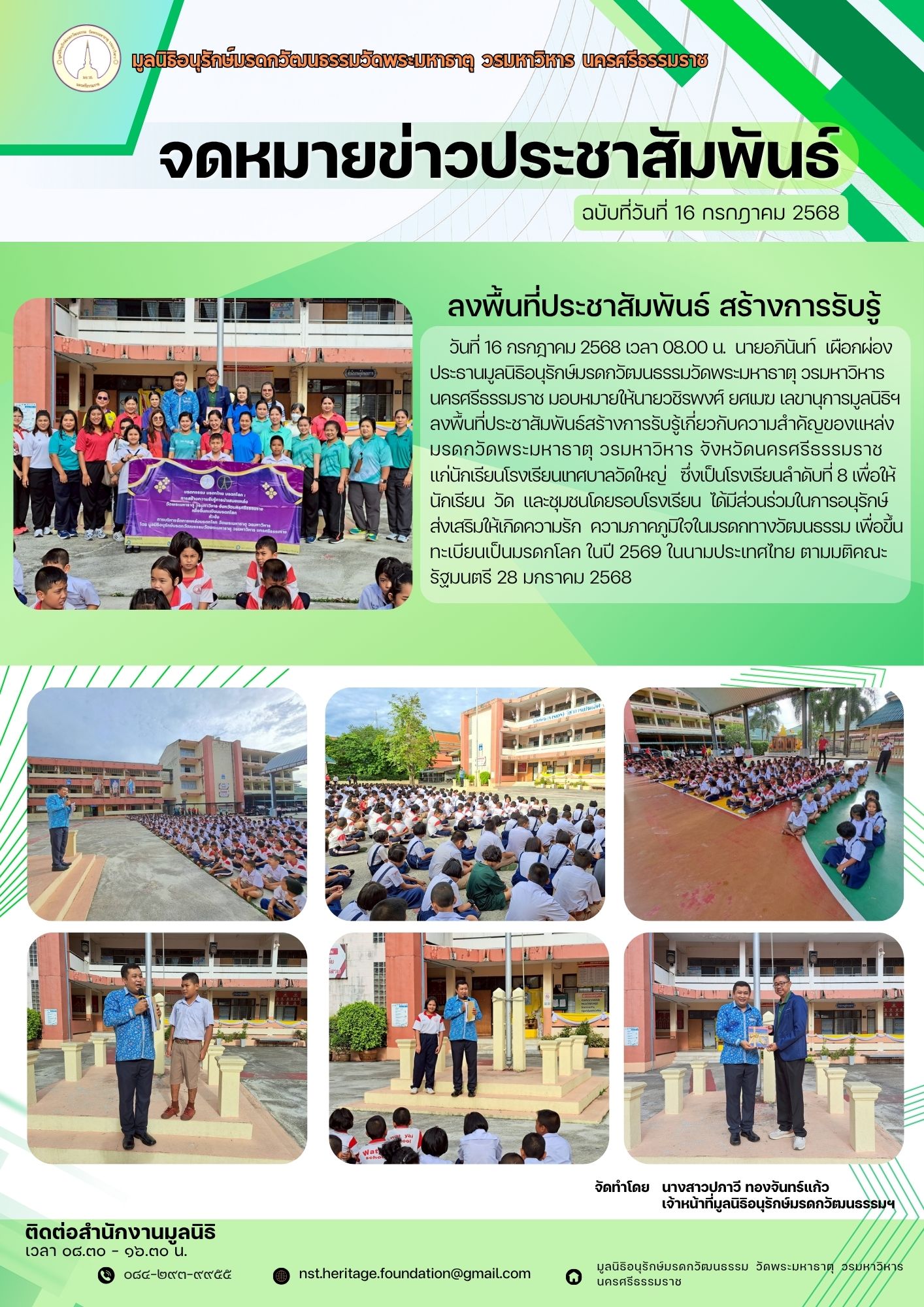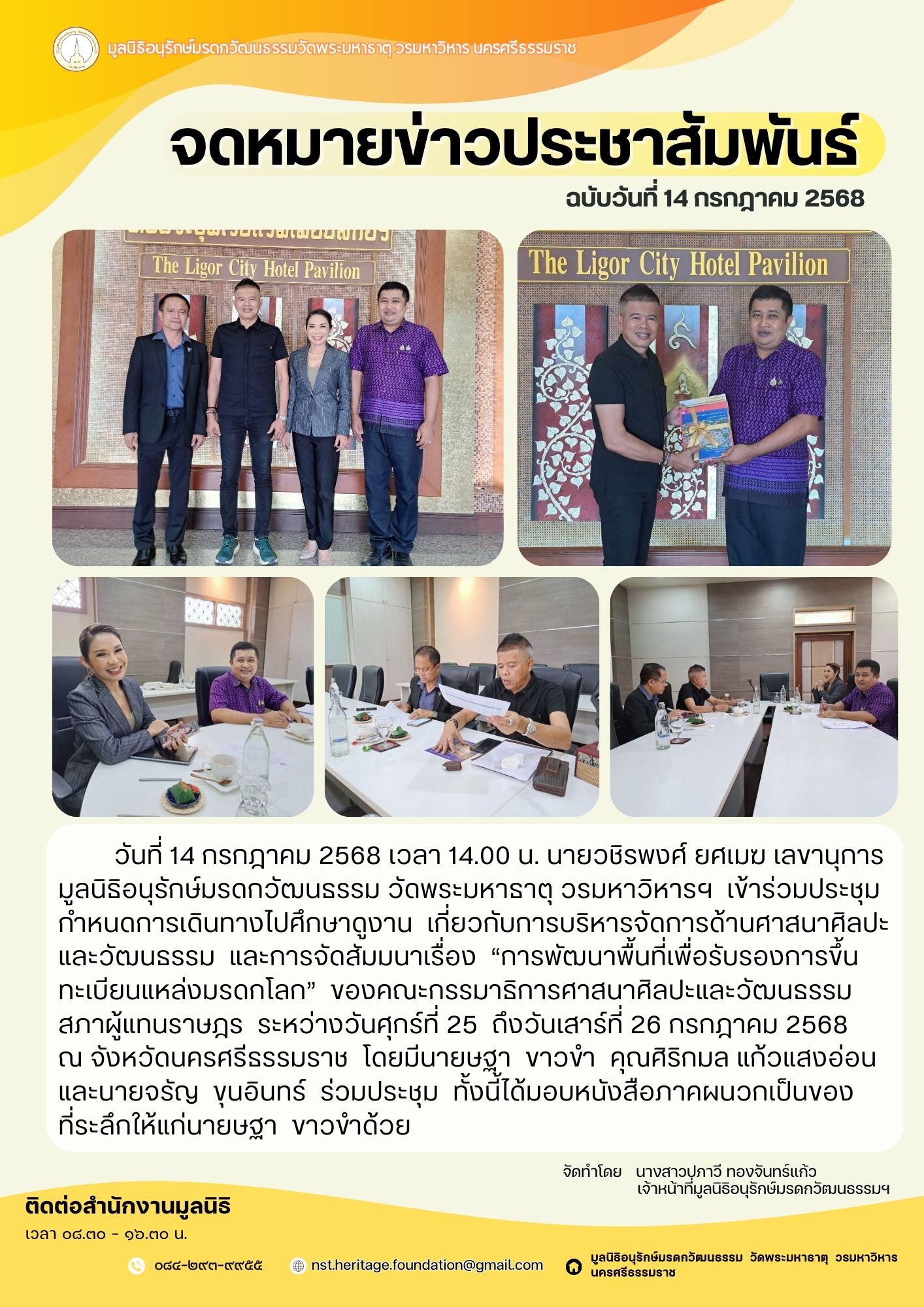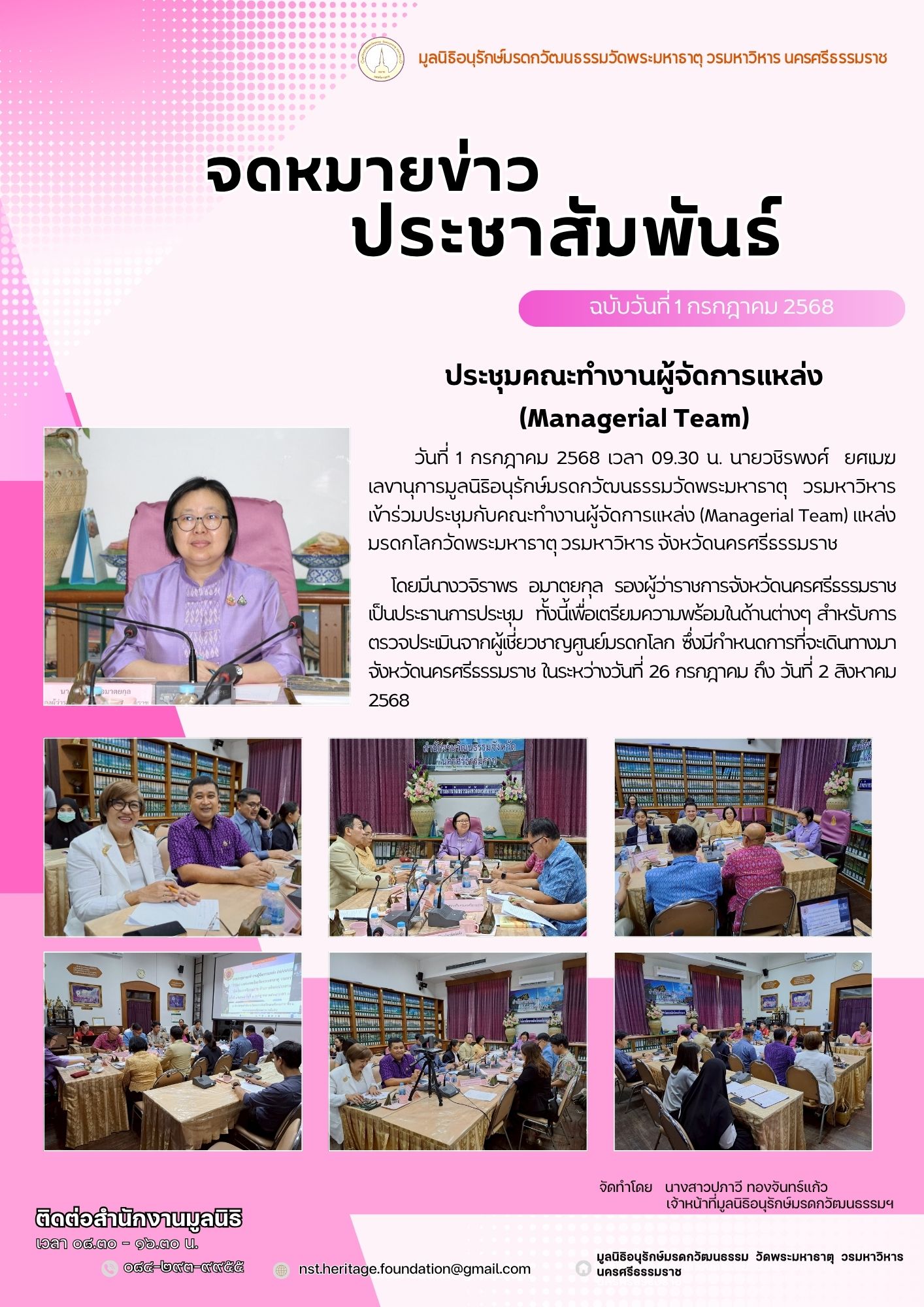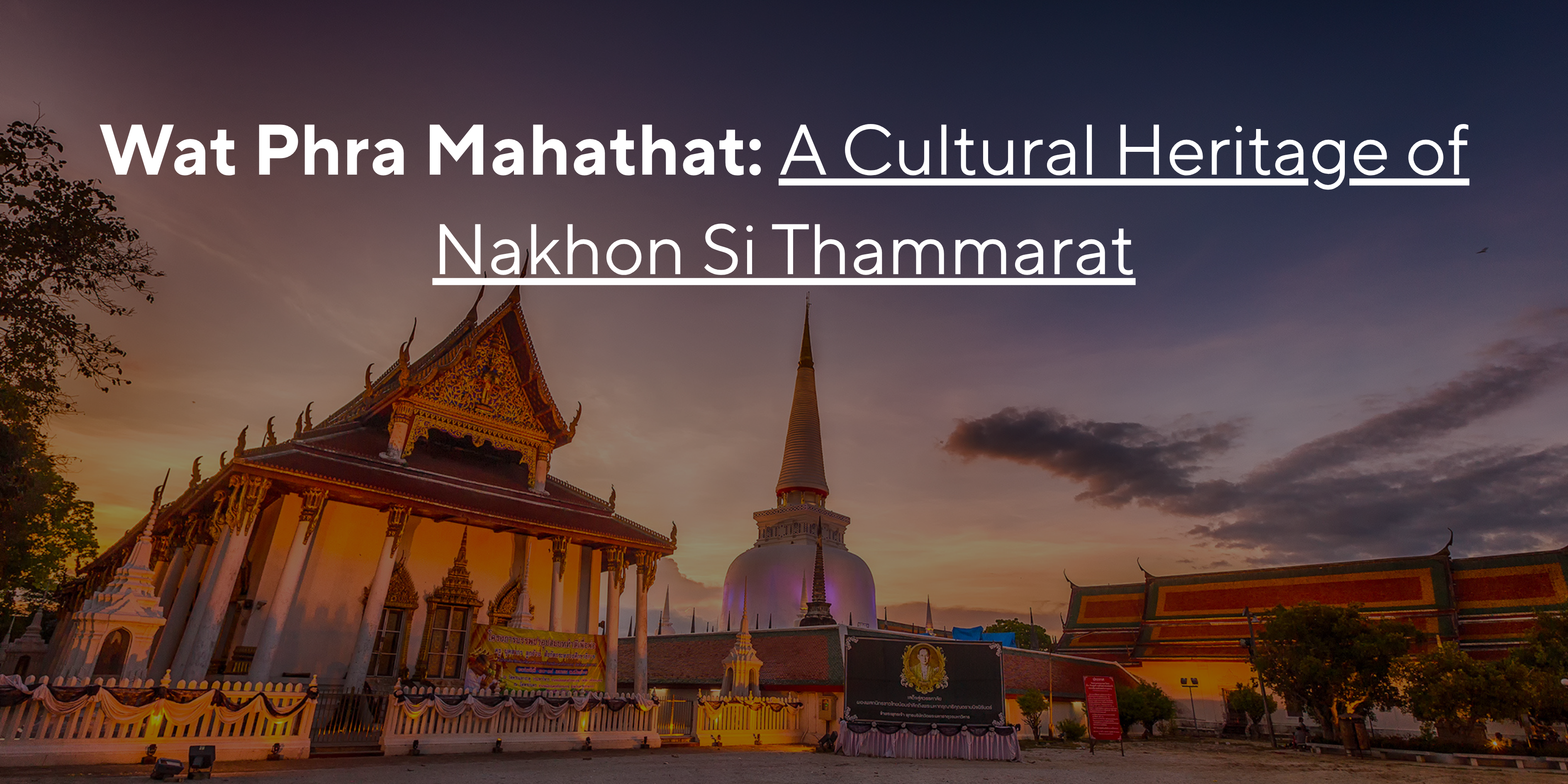Wat Phra Mahathat Woramahawihan
Originally known as "Wat Phra Borommathat," the temple is commonly referred to by locals as "Wat Phra That." Its most significant symbol is the "Golden-Spired Phra Borommathat Chedi," which enshrines a sacred relic — the Buddha’s tooth (Phra Khiao Kaew). This revered stupa is considered one of the most ancient and beautiful in Thailand, and is a highly sacred site for Buddhists.
Wat Phra Mahathat Woramahawihan holds the status of a first-class royal temple of the Woramahawihan category. It is also an important historical and spiritual site — a sanctuary of faith and a spiritual center for the people of Nakhon Si Thammarat, as well as for Buddhists across southern Thailand and around the world.
Importantly, devout Buddhists widely believe that paying homage to this sacred chedi brings immense blessings and auspiciousness to oneself and one's family — a merit beyond measure. As the local saying goes:
"To be born even once in this life, if granted the chance to pay respect to the Phra Borommathat of Nakhon City, even just once, is considered a profound blessing."
Press Release
-
Outreach Activity to Raise Awareness on World Heritage Site Significance

On July 16, 2025, at 8:00 AM, Mr. Wachiraphong Yotmek, Secretary of the Foundation for the Conservation of Cultural Heritage at Wat Phra Mahathat Woramahawihan
Read more: Outreach Activity to Raise Awareness on World Heritage Site Significance
-
Attending the Meeting to Plan a Study Visit

On July 14, 2025, at 2:00 PM, Mr. Wachiraphong Yotmek, Secretary of the Foundation for the Conservation of Cultural Heritage
-
Attending the Managerial Team Meeting for the World Heritage Site

On July 1, 2025, at 9:30 AM, Mr. Wachiraphong Yotmek, Secretary of the Foundation for the Conservation of Cultural Heritage
Read more: Attending the Managerial Team Meeting for the World Heritage Site
-
Governor of Nakhon Si Thammarat Participates in the Traditional “Tak Bat Thoop Thian” Ceremony at Wat Phra Mahathat

On July 11, 2025, at 4:00 PM, Mr. Somchai Leelanoi, Governor of Nakhon Si Thammarat Province








